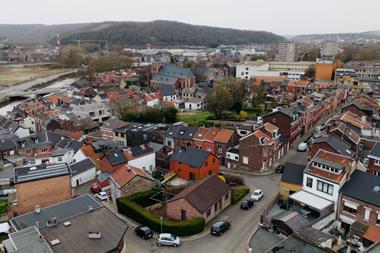GLOBAL - Global commercial property delivered a 9.8% total return in local currency last year, according to the IPD Global Annual index.
The top-performing country was Canada, with a total return for 2011 of 15.9%, mostly in capital growth.
The US came close behind, with a 14.5% total return, again largely resulting from an increase in capital.
Peter Hobbs, senior director of group business development at IPD, said: "Of particular interest is the divergence between the two largest markets - the US and Japan.
"In the US, continued yield compression delivered strong double-digit returns for the second consecutive year, while in Japan returns remained flat at 3.5% because of further value declines and low income yields."
The IPD Global index measures unlevered real estate performance across 24 global markets, covering more than 62,000 assets valued at more than $1.3trn (€985bn).
The wide divergence across markets has big implications for investors and managers with global real estate exposure, Hobbs said.
Beyond the US, there were only a small number of mostly commodity-driven markets that exceeded the global average, such as Australia, Canada and South Africa.
"Exposure to these markets would have likely boosted performance, while at the other extreme exposure to a series of mostly [Southern] European countries that suffered value declines would have been a drag on performance," Hobbs said.
The figures show significant sector and city-specific differences on top of national variations.
Top performing cities were on or near the Pacific Rim: Calgary with a total return of 21.6%, San Diego (19.5%), Portland (18.0%) and Seattle (17.7%).
Of the major markets, New York returned 14.6% and Washington 13.6%.
London was the highest UK performer at 11.2%, with Munich topping the German rankings at 8.6%.
Results at city level show startling differences within national markets, with the divergence between top and bottom-performing cities reaching more than 1,000 basis points in the US and 600bps in Canada, Germany and the UK.
"Even in the normally stable German market, Munich posted a strong return, better than the national performance of all European markets with the exception of Poland and far stronger than Frankfurt at just 2.8%," Hobbs said.
At sector level, industrial and residential outperformed while the office sector was the worst performer for the second consecutive year, a full 150bps behind the global average.
Despite these variations, real estate remains well placed, certainly in the near term, according to IPD.
But values across the globe are still some distance from their pre-crash peak, having rebounded by only 7%, after falling by more than 20% in 2008-09.
Income yields also remain attractive in most markets, and new supply remains muted.
The panellists at IPD's webinar presentation felt the high double-digit returns of the US would revert towards the long-run average of high single digits.
But the weak fundamentals in Europe suggest returns will be lower in this region, although, as always, there will be significant differences across the markets.












